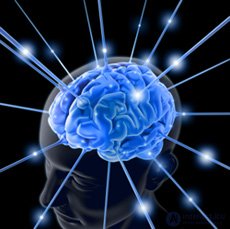Lecture
The origins of scientific psychology are usually traced to the work of the German physicist Hermann von Helmgolid (1821-1894) and his student Wilhelm Wundt (1832-1920). Helmholtz applied the scientific method to the study of human vision, and the Handbook of Physiological Optics book published by him, even today, is characterized as an unsurpassed contribution to the study of the physics and physiology of human vision.
In 1879, Wundt opened the first experimental psychology laboratory at the University of Leipzig. Wundt insisted on conducting carefully controlled experiments in which his staff performed the tasks of perception or the formation of associations, conducting introspective observations of their thinking processes.
Such careful monitoring allowed him to do a great deal to turn psychology into a science, but due to the subjective nature of the data, the likelihood that the experimenter would seek to refute the theories put forward by him remained very low. On the other hand, biologists studying the behavior of animals did not use introspective data and developed an objective methodology, as G.S. Jennings in his important work Behavior of the Lower Organisms. Extending this approach to people, the advocates of the behavioral movement, led by John Watson (1878-1958), rejected any theory that takes into account thought processes, on the grounds that introspection cannot provide reliable evidence. Behaviorists insisted that only objective measures of perception (or stimuli) presented to the animal and the resulting actions (or responses to stimuli) should be studied.
Such mental constructions as knowledge, beliefs, goals, and consistent reasoning were rejected as unscientific “philistine psychology.” Behaviorism made it possible to learn a lot about rats and pigeons, but it turned out to be less successful in studying people. Nevertheless, this scientific direction retained a strong position in the field of psychology (especially in the United States of America) from about 1920 to 1960.
The views that the brain is viewed as an information processing device, characteristic of representatives of cognitive psychology , can be traced, at least, to the works of William James (1842-1910). Helmholtz also argued that perception is associated with a certain form of subconscious logical inference. In the United States, such an approach to the study of cognitive processes was largely rejected because of the widespread behaviorist views, but the faculty of applied psychology at the University of Cambridge, headed by Frederick Bartlett (1886-1969), managed to organize a wide range of cognitive modeling work.
In his book The Nature of Explanation, a student and Bartlett follower, Kenneth Craig, argued strongly for the use of such “mental” terms as beliefs and goals, proving that they are no less scientific than, say, terms used in discussions about gases, such as pressure and temperature, despite the fact that they are talking about molecules that do not themselves possess these characteristics.
Craig outlined the following three stages of the knowledge-based agent: first, the current stimulus must be transformed into an internal representation, secondly, with this representation, manipulations must be performed through cognitive processes to develop new internal representations, and third, they must, in turn, be again transformed into actions. He clearly explained why such a project is acceptable to any agent.
| If a living organism carries in its head a “model on a reduced scale” of external reality and its possible actions, it has the ability to test various options, come to a conclusion which of them is the best, respond to future situations, before they arise, use knowledge of past events, facing the present and the future, and in all respects responding to dangers, meeting with them, is much more complete, safer for themselves, and also in a more competent manner. |  |
In 1945, after the death of Craig as a result of an accident while riding a bicycle, his work was continued by Donald Brodbent, whose book Perception and Communication included some of the first models of information processing of psychological phenomena. Meanwhile, in the United States, computer modeling work has led to the creation of such a scientific field as cognitive science .
There is an opinion that the emergence of this trend occurred at a seminar at the Massachusetts Institute of Technology in September 1956. (It is shown below that this event took place only two months after the conference, at which artificial intelligence itself was “born”.)
At this seminar, George Miller presented the report The Magic Number Seven, Noam Chomsky read the report Three Models of Language, and Allen Newell and Herbert Simon presented their work The Logic Theory Machine.
In these three works, which became widely known, it was shown how computer models can be used to solve problems in the field of psychology, memorization, processing of natural language and logical thinking. Nowadays, among psychologists there are widespread views that “any theory of knowledge should resemble a computer program”, i.e. it should describe in detail the information processing mechanism by which some cognitive function can be realized.
Comments
To leave a comment
Connection with other sciences and cultural phenomena
Terms: Connection with other sciences and cultural phenomena